Welcome to my guide to the best lenses for the 61 megapixel Sony A7C R full-frame compact mirrorless camera in 2025.

Table of Contents[Hide][Show]
- Which Lenses Are Compatible With the Sony A7C R?
Which Are the Best Lenses To Buy for the Sony A7C R in 2025?+−
- 1. Sony FE 16-35mm F2.8 GM II
- 2. Sony FE 20-70mm F4 G
- 3. Sony FE 24mm F1.4 GM
- 4. Sony FE 24-70mm F2.8 GM II
- 5. Sony FE 24-105mm F4 G OSS
- 6. Tamron 28-75mm F2.8 Di III VXD G2
- 7. Sony FE 35mm F1.4 GM
- 8. Sony FE 50mm F1.2 GM
- 9. Sony FE 85mm F1.4 GM II
- 10. Sony FE 90mm F2.8 Macro G OSS
- 11. Sony FE 135mm F1.8 GM
- 12. Sony FE 70-200mm F4 Macro G OSS Ⅱ
- 13. Tamron 70-180mm F2.8 Di III VC VXD G2
- 14. Sony FE F4.5-5.6 100-400mm G Master
- 15. Tamron 28-300mm F/4-7.1 Di III VC VXD
- Which Is the Best Travel Lens?
- Which Is the Best Portrait Lens?
- Which is the Best Wide-Angle / Landscape Lens?
- Which is the Best Wildlife Lens?
- Additional Lens Guides
- Camera & Lens Deals
- Sony A7C R Guides & Resources
- Sony A7C R Lens FAQs
Which Lenses Are Compatible With the Sony A7C R?
The Sony A7C R is compatible with both full-frame and APS-C E-mount lenses from Sony and also from third-parties such as Tamron and Sigma. Sony maintains a compatibility list of all of their supported lenses for the A7C R here.
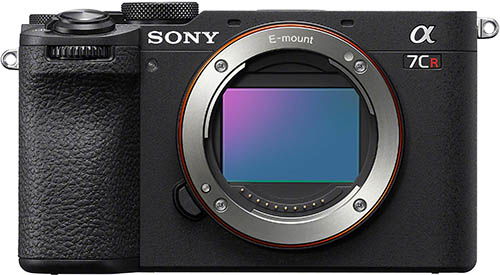
Lenses with different lens mounts such as the Canon EF mount are also compatible with the A7C R but only when used with an EF to E-mount adapter such as the one from Metabones or the Sigma MC-11 adapter.
Which Are the Best Lenses To Buy for the Sony A7C R in 2025?
With over one hundred E-mount lenses to choose from including E-mount lenses from third-parties, purchasing a lens for your A7C R can be a little overwhelming.
Therefore I’m going to recommend 15 lenses that should definitely take a much closer look at.
You’ll find links to additional niche lens guides as well as a complete list of E-mount lenses a little further down this article.
1. Sony FE 16-35mm F2.8 GM II
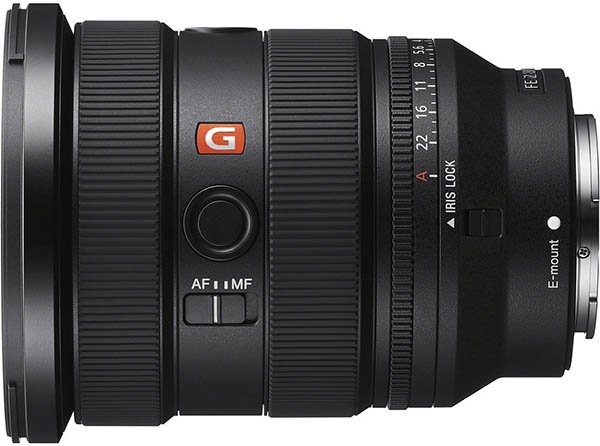
The Sony FE 16-35mm f/2.8 GM II follows in the foot steps of the excellent Sony FE 16-35mm f/2.8 GM lens. If you are curious about the differences between them, then please see my Sony FE 16-35mm F2.8 GM vs GM II Comparison.
This Mark II lens is the ideal choice for landscape, astro, real estate, architectural, and many other forms of photography where a wider perspective is required.
Constructed of 15 elements in 12 groups the build quality is excellent with it being a G Master lens and of cause it’s also weather sealed against dust and moisture.
On the lens body you’ll find an aperture ring with both a click ON/OFF switch and an iris lock switch for quick, flexible aperture control. There are also two customizable focus hold buttons.
The lens features four XD (extreme dynamic) Linear Motors for precise high speed lens control. It achieves approximately 2x higher AF speed compared to the Mark. Focus breathing, focus shift, and axis shift are also greatly reduced.
This lens also features Linear Response MF. With Linear Response MF the focus changes linearly in response to focus ring rotation similar to mechanical focus, giving the user more control for fast, accurate and consistent manual focusing.
The 11 circular aperture blades delivers ultra-smooth bokeh and beautiful sunstars, focusing is fast and silent, and the sharpness is excellent across the frame.
It weighs only 19.3 oz. / 547 g which makes it roughly 20% lighter than the Mark I, it’s also 10.1 mm shorter in length.
If you are a landscape, astro, real estate, or architectural photographer then this is a great lens to pair with the A7C R.
Key Specs
| Model Name: | SEL1635GM2 |
| Format: | 35 mm full frame |
| Focal Length (mm): | 16-35 mm |
| Angle of View (35 mm): | 107°–63° |
| Maximum Aperture: | F2.8 |
| Minimum Aperture: | F22 |
| Lens Groups / Elements: | 12–15 |
| Aperture Blades: | 11 circular |
| Minimum Focusing Distance: | 0.22(W,T) m (0.73(W,T) ft) |
| Maximum Magnification Ratio: | 0.32x |
| Lens Image Stabilization: | No |
| Filter Diameter: | 82 mm |
| Diameter: | 3-1/2″ / 87.8 mm |
| Length: | 4-1/2″ / 111.5 mm |
| Weight: | 19.3 oz. / 547 g |
Pros
- Excellent sharpness across the frame
- Beautiful sunstars
- Very little coma and distortion
- Well controlled chromatic aberration
- Aperture control ring
- Minimal focus breathing
- Only 19.3 oz. / 547 g
Cons
- Price
What’s in the Box
- Sony FE 16-35mm F2.8 GM II lens
- Hood (model): ALC-SH177
- Lens front cap: ALC-F82S
- Lens rear cap: ALC-R1EM
- Soft case and strap
Review
To learn more about this lens I’d recommend watching this review from Chris Niccolls at PetaPixel:
2. Sony FE 20-70mm F4 G
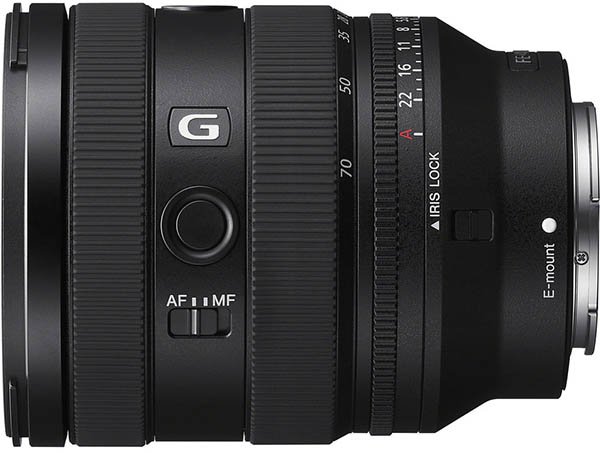
Weighing in at only 17.3 oz. / 488 g the Sony FE 20-70mm F4 G zoom lens makes a great choice for the A7C R’s small compact body.
It features a very useful focal length of 20-70mm and a maximum aperture of F4, making this lens a great choice for travel, landscape and urban photography.
This intro video from Sony is a great way to learn a little more about this lens.
This lens is constructed of 16 elements in 13 groups and is extremely well built. It’s also very well sealed against dust and moisture.
On the lens itself you will find two customizable focus hold, an AF on/off switch, an aperture ring and a click on/off switch for the aperture ring.
The minimum focus distances is 25cm (9.8″) at 70mm which gives a very high 0.39x magnification.
Two XD (extreme dynamic) Linear Motors provide high thrust for fast, quiet, smooth focus drive. Compared to the older SEL2470Z lens there’s a 60% increase in AF speed, and tracking performance has been improved by up to 2 times.
This lens also supports the breathing compensation function with supported cameras like the A7C R.
Key Specs
| Model Name: | SEL2070G |
| Format: | 35 mm full frame |
| Focal Length (mm): | 20-70 mm |
| Angle of View (35 mm): | 94°-34° |
| Maximum Aperture: | F4 |
| Minimum Aperture: | F22 |
| Lens Groups / Elements: | 13–16 |
| Aperture Blades: | 9 circular |
| Minimum Focusing Distance: | 0.3(W)-0.25(T) (AF) 0.25 (MF) |
| Maximum Magnification Ratio: | 0.39x |
| Lens Image Stabilization: | No |
| Filter Diameter: | 72 mm |
| Diameter: | 3-1/8″ / 78.7 mm |
| Length: | 4″ / 99 mm |
| Weight: | 17.3 oz. / 488 g |
Pros
- Compact size and low weight
- Well built and weather sealed
- Very sharp in the center and mid-frame throughout the zoom range
- Fast and accurate autofocus
- Minimal focus breathing
- Low vignette
- Lood flare resistance
- Low aberrations
Cons
- Strong barrel distortion at 20mm
- Corners are a little soft wide open at 20mm
What’s in the Box
- Sony FE 20-70mm F4 G lens
- Hood (model): ALC-SH174
- Lens front cap: ALC-F72S
- Lens rear cap: ALC-R1EM
Review
To learn more about the Sony FE 20-70mm F4 G lens I’d recommending watching this excellent review from Dustin Abbott.
3. Sony FE 24mm F1.4 GM
With the creation of the Sony FE 24mm F1.4 GM lens Sony really went above and beyond.
This lens is constructed of 13 elements in 10 groups and is extremely well built, as it should be for a G Master (GM) lens. It’s also weather sealed against dust and moisture and weighs in at only 15.7 oz (445 g), making it an ideal pairing with the compact body of the A7C R.
On the lens itself you will find a focus hold button that can be customized, an AF on/off switch, an aperture selection ring and a click on/off switch for the aperture ring.
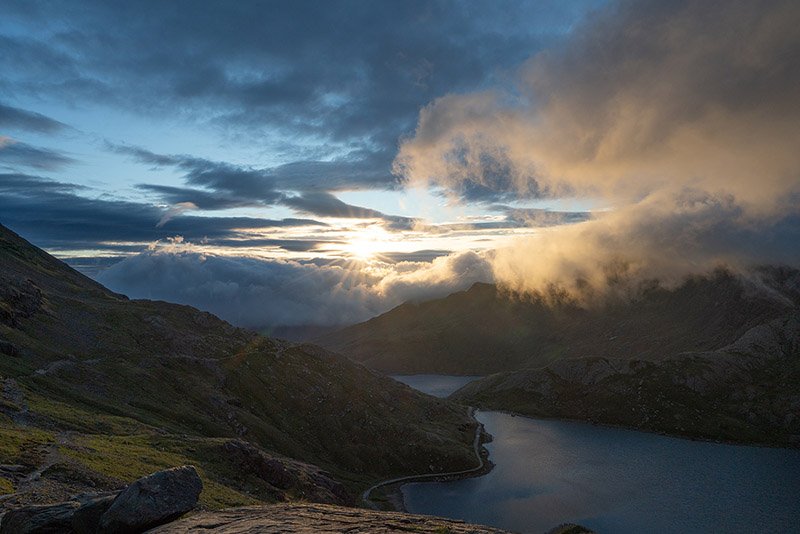
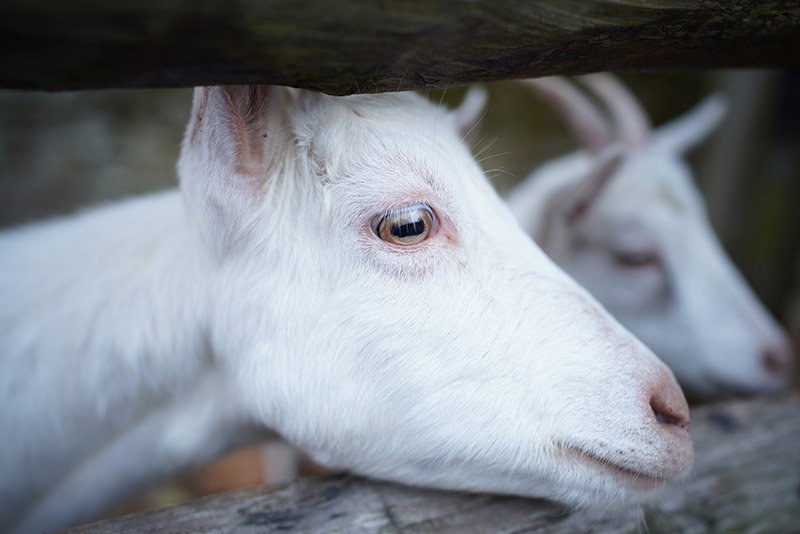
This lens is very sharp across the frame even when wide open at its maximum aperture of f/1.4. Distortion is also well controlled as is the coma, making this a very good choice for astrophotography.
The bokeh is silky smooth and possibly the best of all the current 24mm f/1.4 lenses available. Autofocus is fast, quiet and deadly accurate.
24mm is an excellent focal length for many subjects including: architecture, wedding and event photography, street photography, astrophotography and even environmental portraits.
I own this lens myself and will not be letting it go anytime soon. If you are shooting with the A7C R and want a fast excellent quality 24mm prime, then this is the lens to get.
Key Specs
| Model Name: | SEL24F14GM |
| Format: | 35 mm full frame |
| Focal Length (mm): | 24 mm |
| Angle of View (35 mm): | 84° |
| Maximum Aperture: | F1.4 |
| Minimum Aperture: | F16 |
| Lens Groups / Elements: | 10-13 |
| Aperture Blades: | 11 circular |
| Minimum Focusing Distance: | 0.79 ft (0.24 m) |
| Maximum Magnification Ratio: | 0.17x |
| Lens Image Stabilization: | No |
| Filter Diameter: | 67 mm |
| Diameter: | 3″ / 75.4 mm |
| Length: | 3 3/4″ / 92.4 mm |
| Weight: | 15.7 oz. / 445 g |
Pros
- Very sharp across the frame wide open
- Beautiful bokeh
- Size & weight
- Aperture ring
- Fast autofocus
Cons
- Strong vignetting wide open
- Flare resistance
What’s in the Box
- Sony FE 24mm F1.4 GM lens
- Hood (model): ALC-SH154
- Lens front cap: ALC-F67S
- Lens rear cap: ALC-R1EM
- Case
Review
To learn more about the Sony FE 24mm F1.4 GM lens I’d recommending watching this excellent review from Dustin Abbott.
And if you enjoy astrophotography then this review from the sadly late but still great Alyn Wallace is a must watch.
4. Sony FE 24-70mm F2.8 GM II
The Sony FE 24-70mm F2.8 GM II is one of the very few zoom lenses that can keep up optically with many of the best prime lenses out there.
Constructed from 20 elements in 15 groups, this is also a very well built and weather sealed lens. The 11 bladed circular aperture helps to create a silky smooth bokeh that will really make your subjects pop.
Four of Sony’s original XD (extreme dynamic) Linear Motors help to achieve very high autofocus precision and approximately 2x better tracking performance while zooming than the previous Mark I lens.
Weighing just 24.6 oz (695 g) this updated Mark II lens is an incredible 6.74 oz (191 g) lighter than its predecessor the Mark I, making it a great option to pair with the A7C R.
On the lens body itself you’ll find two customizable focus hold buttons, a separate focus, zoom and de-clickable aperture ring, an iris lock switch, AF/MF switch and a zoom smoothness switch.
Sharpness is outstanding throughout the entire zoom range at all apertures and chromatic aberrations are well controlled too.
Whether shooting landscapes, weddings, sports, or portraits, this lens will handle pretty much everything that you can throw at it and some.
Key Specs
| Model Name: | SEL2470GM2 |
| Format: | 35 mm full frame |
| Focal Length (mm): | 24-70 mm |
| Angle of View (35 mm): | 84°-34° |
| Maximum Aperture: | F2.8 |
| Minimum Aperture: | F22 |
| Lens Groups / Elements: | 15-20 |
| Aperture Blades: | 11 circular |
| Minimum Focusing Distance: | 0.21 ft. (W)-0.3 ft. (T) 0.69 m (W)-0.99 m (T) |
| Maximum Magnification Ratio: | 0.32 x |
| Lens Image Stabilization: | No |
| Filter Diameter: | 82 |
| Diameter: | 3-1/2″ / 87.8 mm |
| Length: | 3-1/2″ / 119.9 mm |
| Weight: | 24.6 oz. / 695 g |
Pros
- Size and weight
- Build quality and weather sealing
- Fantastic autofocus
- Excellent resolution and contrast throughout the zoom range
- Near perfect center and mid-frame sharpness
Cons
- Very expensive
- Some distortion and vignette
What’s in the Box
- Sony FE 24-70mm F2.8 GM II lens
- Lens hood: ALC-SH168
- Lens front cap: ALC-F82S
- Lens rear cap: ALC-R1EM Lens
- Case
Review
To learn more about this excellent lens I’d recommend watching this brilliant review from Gerald Undone.
5. Sony FE 24-105mm F4 G OSS
If you are looking for a great all-rounder then the Sony FE 24-105mm f/4 G OSS lens definitely ticks this box.
With a very versatile focal length this lens is a good choice for travel photography with the A7C R.
The lens is sharp from 24mm all the way up to 105mm even when you are shooting wide open at f/4. If you like MTF charts then Roger Cicala has some over at LensRentals.com.
The lens is constructed from 17 elements in 14 groups and built extremely well. The 9 bladed circular aperture helps to produce nice soft backgrounds that will help your subjects to standout.
On the lens body itself you’ll find a customizable focus hold button, separate focus and zoom rings, an AF/MF switch and a Steady Shot On/Off switch.
The autofocus is fast, accurate and very quiet. It also has optical stabilization built into the lens.
Key Specs
| Model Name: | SEL24105G |
| Format: | 35 mm full frame |
| Focal Length (mm): | 24-105 mm |
| Angle of View (35 mm): | 84°-23° |
| Maximum Aperture: | F4 |
| Minimum Aperture: | F22 |
| Lens Groups / Elements: | 14-17 |
| Aperture Blades: | 9 circular |
| Minimum Focusing Distance: | 1.25 ft (0.38 m) |
| Maximum Magnification Ratio: | 0.31x |
| Lens Image Stabilization: | Yes |
| Filter Diameter: | 77 |
| Diameter: | 3-3/8″ / 83.4 mm |
| Length: | 4-1/2″ / 113.3 mm |
| Weight: | 23.4 oz. / 663 g |
Pros
- Useful focal range
- Excellent sharpness across the frame
- Chromatic aberrations and flare well controlled
- Quiet and fast autofocus
Cons
- Expensive
- No zoom lock switch
What’s in the Box
- Sony FE 24-105mm F4 G OSS lens
- Lens hood: ALC-SH152
- Lens front cap: ALC-F77S
- Lens rear cap: ALC-R1EM
- Case
Review
To learn more about the Sony FE 24-105mm F4 G OSS lens I’d recommend this in-depth review by Dustin Abbott.
6. Tamron 28-75mm F2.8 Di III VXD G2
Tamron enjoyed so much success with their 28-75mm F2.8 Di III RXD lens that they decided to introduce a Mark II version sooner rather than later.
It appears that Tamron is trying very hard not to tread on Sony’s toes my introducing a unique 28-75mm focal length instead of going with the standard 24-70.
The lens is constructed of 17 elements in 5 groups and there’s a 9 bladed circular aperture. Despite the very attractive price this lens is still extremely well built, it’s also weather sealed.
It shares the same 67 mm filter thread like many of Tamron’s other Sony E-mount lenses, which saves you the trouble and cost of purchasing multiple filters.
The lens delivers a very strong optical performance throughout zoom range, there’s also excellent contrast and control of chromatic aberrations.
The VXD focus motor is both fast and quiet. However, like with many of Tamron’s lenses there is no stabilization built into the lens so you’ll need to rely on your cameras IBIS (in-body stabilization). Thankfully the Sony A7C R does have IBIS which offers 7 stops of stabilization.
If you are looking for a more affordable alternative to the rather expensive Sony 24-70 F2.8 GM II lens for your A7C R then this is the lens to take a closer look at.
Key Specs
| Model Name: | A063S |
| Format: | 35 mm full frame |
| Focal Length (mm): | 28-75 mm |
| Angle of View (35 mm): | 75°23′-32°11′ |
| Maximum Aperture: | F2.8 |
| Minimum Aperture: | F22 |
| Lens Groups / Elements: | 5-17 |
| Aperture Blades: | 9 circular |
| Minimum Focusing Distance: | 0.59 ft / 0.18 m (wide angle), 1.25 ft / 0.38 m (telephoto) |
| Maximum Magnification Ratio: | 1:2.7 (Wide angle), 1:4,1 (Telephoto) |
| Lens Image Stabilization: | No |
| Filter Diameter: | 67 mm |
| Diameter: | 3.10″ / 78.8 mm |
| Length: | 4.63″ / 117.6 mm |
| Weight: | 19.05 oz. / 540 g |
Pros
- Very good build quality and handling
- Advanced weather sealing with 8 seal points
- Fast and quiet VXD focus motor
- Strong optical performance throughout zoom range
- Exceptional contrast
- Excellent control of chromatic aberrations
- Nice looking bokeh
- Price
Cons
- Limited 28mm wide-end
- A little color fringing
What’s in the Box
- Tamron 28-75mm F2.8 Di III VXD G2 lens
- Lens cap
- Lens hood
Review
To learn more about the Tamron 28-75mm F2.8 Di III VXD G2 lens I’d strongly recommend watching this review from Chris and Jordan at DPReview.
7. Sony FE 35mm F1.4 GM
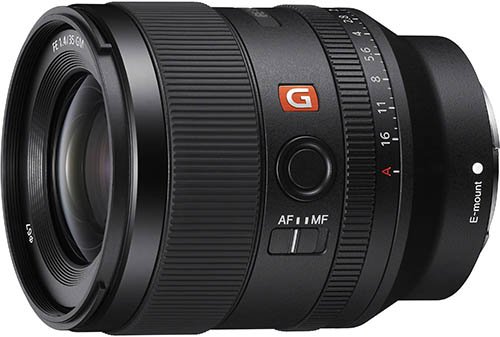
There’s no shortage of 35 mm lens options in Sony’s E-mount line-up, but if you want the best and money is no object then the Sony FE 35mm F1.4 GM is without a doubt one of the better choices.
This lens has been created for both stills and video shooters and features Sony’s de-clickable aperture ring and a programmable focus hold button for multiple custom functions.
The lens is very well built and constructed of 10 groups and 14 elements. The 11 circular aperture blades help to create a beautifully soft bokeh and the lens is weather sealed at all of the important points.
Two XD Extreme Dynamic Linear motors provide fast, quiet and very precise subject tracking.
This lens delivers excellent sharpness at f/1.4 across the frame, has good flare resistance and coma handling, and also low chromatic aberrations.
If you are looking for a 35mm full frame lens for your A7C R then this is definitely the one to take a much closer look at.
Key Specs
| Model Name: | SEL35F14GM |
| Format: | 35 mm full frame |
| Focal Length (mm): | 35 mm |
| Angle of View (35 mm): | 63° |
| Maximum Aperture: | F1.4 |
| Minimum Aperture: | F16 |
| Lens Groups / Elements: | 10-14 |
| Aperture Blades: | 11 circular |
| Minimum Focusing Distance: | 0.89 ft (AF), 0.82 ft (MF) (0.27 m (AF), 0.25 m (MF)) |
| Maximum Magnification Ratio: | x 0.23 (AF) x 0.26 (MF) |
| Lens Image Stabilization: | No |
| Filter Diameter: | 67 mm |
| Diameter: | 3″ / 76 mm |
| Length: | 3.88″ / 96 mm |
| Weight: | 18.5 oz. / 524 g |
Pros
- Small size and weight
- Great build quality and weather sealing
- Fast, quiet, and accurate autofocus
- Excellent sharpness at f/1.4 across the frame
- Beautifully bokeh
- Low chromatic aberrations
- Good flare resistance and coma handling
Cons
- Expensive
- Some focus breathing
What’s in the Box
- Sony FE 35mm F1.4 GM lens
- Lens hood: ALC-SH164
- Lens front cap: ALC-F67S
- Lens rear cap: ALC-R1EM
- Soft case
Review
If you’d like to learn more about the Sony FE 35mm F1.4 GM lens then this review from Gerald Undone is worth a watch.
8. Sony FE 50mm F1.2 GM
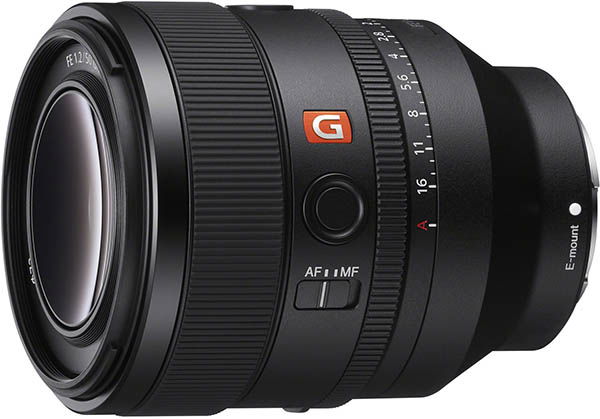
The Sony FE 50mm F1.2 GM lens boasts a fast maximum aperture of f/1.2 in a compact, lightweight, and weather-sealed body.
Constructed with 10 groups and 14 elements, including three advanced aspherical elements and a Nano AR II coating to help reduce flare and ghosting. The lens features an 11-blade circular aperture for beautifully smooth and rounded bokeh.
Four XD (extreme dynamic) Linear Motors provide fast, accurate, and quiet autofocus, while Linear Response MF ensures the focus ring responds smoothly to manual adjustments.
On the lens body you’ll find two focus hold buttons, a focus mode switch, a focus ring, and an aperture ring with switchable click stops.
This lens offers excellent sharpness wide open across the frame, low chromatic aberrations, and strong resistance to flare.
If you’re looking for a 50mm lens for your A7C R, this is certainly one to consider.
Key Specs
| Model Name: | SEL50F12GM |
| Format: | 35 mm full frame |
| Focal Length (mm): | 50 mm |
| Angle of View (35 mm): | 47° |
| Maximum Aperture: | F1.2 |
| Minimum Aperture: | F16 |
| Lens Groups / Elements: | 10-14 |
| Aperture Blades: | 11 circular |
| Minimum Focusing Distance: | 0.4 m (1.32 ft) |
| Maximum Magnification Ratio: | 0.17x |
| Lens Image Stabilization: | No |
| Filter Diameter: | 72mm |
| Diameter: | 3-1/2″ / 87 mm |
| Length: | 4-3/8″ / 108 mm |
| Weight: | 27.5 oz. / 778 g |
Pros
- Smaller than the competition
- Well built and weather sealed
- Fast, quiet, and accurate autofocus
- Excellent wide open sharpness across the frame
- Lovely soft bokeh
- Low chromatic aberrations
- Good flare resistance
Cons
- Expensive
- Focus breathing
What’s in the Box
- Sony FE 50mm f/1.2 GM Lens (Sony E)
- Sony ALC-F72S 72mm Front Lens Cap
- Sony ALC-R1EM Rear Lens Cap
- Sony ALC-SH163 Lens Hood for FE 50mm f/1.2 GM Lens
- Lens Case
Review
If you’d like to learn more about the Sony FE 50mm F1.2 GM lens then this review from Dustin Abbott is the best one to watch.
9. Sony FE 85mm F1.4 GM II
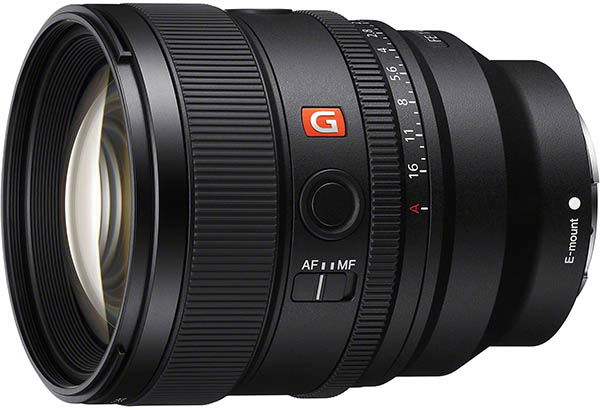
The Sony FE 85mm F1.4 GM Mark II lens features a fast maximum aperture of f/1.4 in a compact, lightweight, and weather-sealed body.
If you are searching for the best portrait lens for your A7C R then this is it.
The new Mark II features an improved construction, consisting of 11 groups and 14 elements, including two ED (Extra-low Dispersion) glass elements that help minimize axial chromatic aberration while maximizing clarity and color.
Sony’s Nano AR Coating II suppresses flare and ghosting that can cause flare and ghosting, enhancing overall image quality.
The 11-blade circular aperture excels at creating beautifully rounded bokeh, helping to make your subjects stand out.
The new Mark II lens weighs in at 22.7 oz. / 642 g vs 28.9 oz. / 820 g for the Mark I, making it 6.28 oz. / 178 g lighter than its predecessor.
The lens features 2 XD (extreme dynamic) linear motors that make the new Mark II lens up to 3x faster than the previous model. Moving subject tracking is also improved by as much as 7x.
On the lens body you’ll find 2 customizable focus hold buttons , an AF/MF switch, an independent aperture ring and Linear Response MF focus ring.
The FE 85mm F1.4 GM Mark II offers excellent sharpness wide open across the frame, low chromatic aberrations, impressive flare resistance, and minimal focus breathing.
You’ll find sample images taken with this lens in our Sony FE 85mm F1.4 GM II Image Thread over on our forum.
Key Specs
| Model Name: | SEL85F14GM2 |
| Format: | 35 mm full frame |
| Focal Length (mm): | 85 mm |
| Angle of View (35 mm): | 29° |
| Maximum Aperture: | F1.4 |
| Minimum Aperture: | F16 |
| Lens Groups / Elements: | 11 / 14 |
| Aperture Blades: | 11 circular |
| Minimum Focusing Distance: | AF 0.85 m, MF 0.8 m |
| Maximum Magnification Ratio: | AF 0.11x, MF 0.12x |
| Lens Image Stabilization: | No |
| Filter Diameter: | 77mm |
| Diameter: | 3.33 ” / 84.7 mm |
| Length: | 4.22 ” / 107.3 mm |
| Weight: | 22.7 oz. / 642 g |
Pros
- Well built and weather sealed
- Extremely fast, accurate and quiet autofocus
- Low focus breathing
- Extremely sharp wide open
- No fringing
- Low vignette and distortion
- Good flare resistance
- Lovely bokeh
Cons
- Expensive
What’s in the Box
- Sony FE 85mm f/1.4 GM II Lens
- Sony ALC-F77S 77mm Front Lens Cap
- Sony ALC-R1EM Rear Lens Cap
- Sony ALC-SH150 Lens Hood
- Padded Lens Case
Review
If you’d like to learn more about the Sony FE 85mm F1.4 GM II lens then this review from Gerald Undone is worth taking the time to watch.
Check Price & Buyer Reviews: Sony FE 85mm F1.4 GM II
At: B&H Photo | Amazon
10. Sony FE 90mm F2.8 Macro G OSS
Despite being called a macro lens, the Sony FE 90mm f/2.8 Macro G OSS lens is also an excellent portrait lens and one of the sharpest lenses that Sony has ever built.
DxOMark reviewed this lens and said that its outstanding. It also scored higher marks than both the Canon and Nikon equivalents.
It is very hard to find fault with this lens but if I’m being very picky then AF performance could be faster and the manual focus ring adjustments could be finer for more precision.
The lens is constructed from 15 elements in 11 groups and has a 9 bladed circular aperture.
Being a macro lens it offers a magnification ratio of 1.0x and a minimum focussing distance of 0.92 ft (0.28 m). This lens also has optical stabilization built in.
For shooting portraits this lens is ridiculously sharp. So if you don’t want to show every spot, blemish and wrinkle on your model this lens probably shouldn’t be your first choice for portrait work.

If you are looking for a dedicated macro lens, or a lens that can combine both macro and portrait photography roles, then look no further than the 90mm F2.8 Macro G OSS lens.
I own this lens myself and love using it for macro work and the odd portrait.
Key Specs
| Model Name: | SEL90M28G |
| Format: | 35 mm full frame |
| Focal Length (mm): | 90 mm |
| Angle of View (35 mm): | 27° |
| Maximum Aperture: | F2.8 |
| Minimum Aperture: | F22 |
| Lens Groups / Elements: | 11/15 |
| Aperture Blades: | 9 circular |
| Minimum Focusing Distance: | 0.92 ft (0.28 m) |
| Maximum Magnification Ratio: | 1.0x |
| Lens Image Stabilization: | Yes |
| Filter Diameter: | 62 mm |
| Diameter: | 3-1/8″ / 79mm |
| Length: | 5-1/4″ / 130.5 mm |
| Weight: | 21.3 oz. / 602 g |
Pros
- Incredible sharpness at all apertures
- Excellent color rendition
- Chromatic aberrations are well controlled
- very well built
- Price
Cons
- Autofocus isn’t the fastest
- Manual focus could allow for finer adjustments
What’s in the Box
- Sony FE 90mm F2.8 Macro G OSS lens
- Lens hood: ALC-SH138
- Lens front cap
- Lens rear cap
- Case
Review
If you’d like to learn more about the Sony FE 90mm F2.8 Macro G OSS lens then this review from Pav is well worth watching.
11. Sony FE 135mm F1.8 GM
Roger Cicala from LensRentals.com tested the Sony FE 135mm F1.8 GM lens and said: “This is the sharpest lens we’ve tested. Period. (At last count, that’s out of 300+ lenses tested.)”
Roger isn’t the only person to praise this lens, many reviewers are saying that this is the sharpest lens that they have ever laid hands on as well.
Thankfully it’s not only sharpness where this lens shines, it also displays minimum chromatic aberrations, very low distortion and vignetting.
The autofocus motors are also extremely fast making this lens a great choice for sports and action photographers as well as portrait shooters.
Constructed from 13 elements in 10 groups with a 11 bladed circular aperture, this is a very well built and weather sealed lens.
On the lens body itself you’ll find a customizable focus hold button, separate focus and zoom rings, an aperture ring, an aperture click on/off switch, an AF/MF switch and a focus limiter switch.
There’s no stabilization built in but with a maximum aperture of F1.8 you’ll be able to increase your shutter speed and freeze the action without bumping up the ISO too much.
If this is a focus range that you shoot at often then it’s well worth taking a closer look at this lens.
Key Specs
| Model Name: | SEL135F18GM |
| Format: | 35 mm full frame |
| Focal Length (mm): | 135 mm |
| Angle of View (35 mm): | 18° |
| Maximum Aperture: | F1.8 |
| Minimum Aperture: | F22 |
| Lens Groups / Elements: | 10–13 |
| Aperture Blades: | 11 circular |
| Minimum Focusing Distance: | 2.3 ft (0.7 m) |
| Maximum Magnification Ratio: | 0.25x |
| Lens Image Stabilization: | No |
| Filter Diameter: | 82 mm |
| Diameter: | 3-5/8″ / 89.5 mm |
| Length: | 5″ / 127 mm |
| Weight: | 33.6 oz. / 950 g |
Pros
- Very high build quality
- Extremely fast and accurate autofocus
- Excellent sharpness and contrast across the frame
- Lovely bokeh and color rendition
- Weather sealing
Cons
- Pretty expensive
- Prone to flare in some situations
What’s in the Box
- Sony FE 135mm F1.8 GM lens
- Hood (model): ALC-SH156
- Lens front cap: ALC-F82S
- Lens rear cap: ALC-R1EM
- Case
Review
To learn more about the Sony FE 135mm F1.8 GM I’d recommend watching this review form Dustin Abbott.
12. Sony FE 70-200mm F4 Macro G OSS Ⅱ
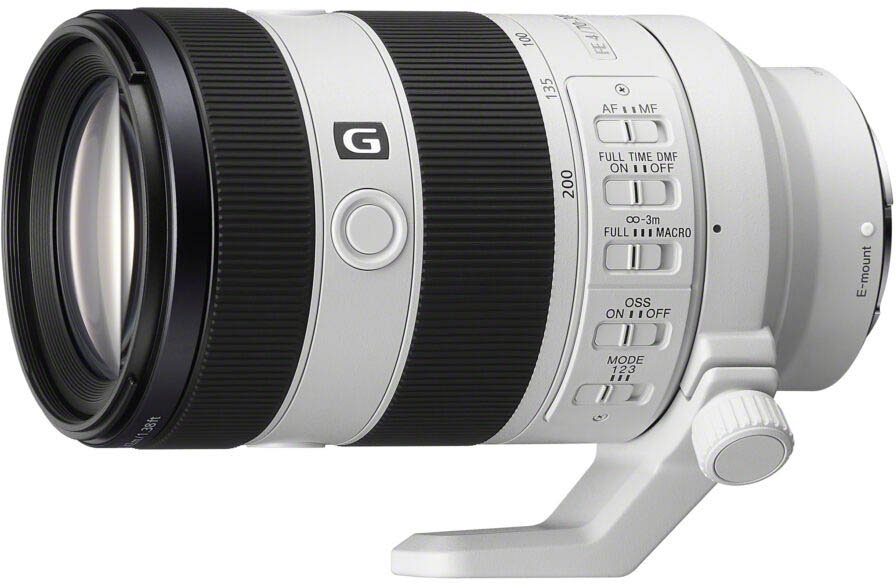
The Sony FE 70-200mm F4 Macro G OSS Ⅱ lens is the second generation of one of Sony’s earliest E-mount lenses first released in 2014.
Sony say that they have improved the AF by 20%. It’s also 15% lighter and 15% shorter that the Mark I. The 1.4x and 2x teleconverters are now also supported which were not supported with the Mark I lens.
Focus is powered by two independently moving focus groups driven by four XD ‘High thrust’ linear motors (two per group) which allow the lens to focus down to just 26 cm (10.2″).
A maximum magnification of 0.5x is the reason this lens has Macro in its name. Although not a true 1:1 macro lens if you attach the 2x teleconverter you will now have 1x magnification.
Focus breathing is minimal and this can also be reduced further by the breathing compensation function on compatible cameras like the A7C R.

The lens is composed of 19 elements in 13 groups, including one advanced aspherical element, three extra-low dispersion (to reduce chromatic aberration), one ED aspherical element and one conventional aspherical lens.
On the lens body you’ll find independent control rings for focus and zoom. There’s a full-time DMF on/off switch, a focus-range limiter, Mode 1, Mode 2, and Mode 3 optical image stabilisation, an AF/MF switch and a zoom lock.

Optically the lens delivers exceptional sharpness and contrast throughout the zoom range, low distortion and vignette and stunning bokeh.
I own both the Mark I and Mark II versions of this lens and hope to put together an in-depth comparison very soon. Until then you’ll just have to take my word that’s it’s definitely worth the upgrade!
Key Specs
| Model Name: | SEL70200G2 |
| Format: | 35 mm full frame |
| Focal Length (mm): | 70-200 mm |
| Angle of View (35 mm): | 34°-12° 30′ |
| Maximum Aperture: | F4 |
| Minimum Aperture: | F22 |
| Lens Groups / Elements: | 13-19 |
| Aperture Blades: | 9 circular |
| Minimum Focusing Distance: | 0.26-0.42 m(0.86-1.38 ft) |
| Maximum Magnification Ratio: | 0.5x |
| Lens Image Stabilization: | Yes |
| Filter Diameter: | 72 mm |
| Diameter: | 3-1/4″ / 82.2 mm |
| Length: | 5-7/8″ / 149 mm |
| Weight: | 28.1 oz. / 794 g |
Pros
- Small and compact
- Good build quality and weather sealing
- Very fast and quiet autofocus motors
- Compatible with Sony’s 1.4x and 2x teleconverters
- Exceptional resolution and contrast throughout the zoom range
- Lovely bokeh
- Low distortion and vignette
- Flare resistance
- Minimal focus breathing
- Removable tripod collar
Cons
- Pincushion distortion throughout the zoom range
- Tripod foot not Arca-compatible (like all of Sony’s lenses)
- External zoom but this does make it more travel and backpack friendly
What’s in the Box
- Sony FE 70-200mm F4 Macro G OSS Ⅱ lens
- Lens hood: ALC-SH176
- Lens front cap: ALC-F72S
- Lens rear cap: ALC-R1EM
Review
If you would like to learn more about the Sony FE 70-200mm F4 Macro G OSS Ⅱ lens then I’d highly recommend this excellent review from Dustin Abbott.
13. Tamron 70-180mm F2.8 Di III VC VXD G2
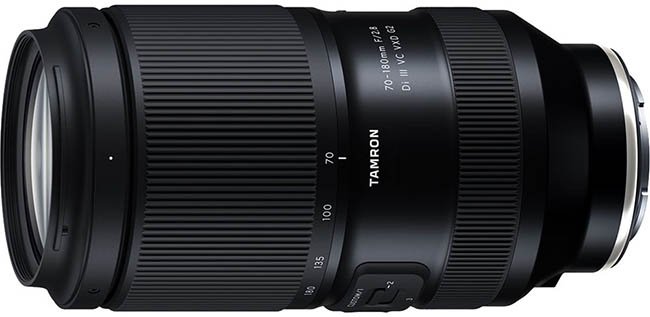
The Tamron 70-180mm F2.8 Di III VC VXD G2 lens is a great lower cost alternative to the Sony 70-200 F2.8 GM II lens.
Constructed of 20 elements in 15 groups and a 9 blade circular aperture, this lens is also weather sealed against dust and moisture.
It weighs just 30.16 oz (855 g) making it 6.70 oz / 190 g lighter than the Sony 70-200 F2.8 GM II lens.
A lot of these weight savings come down to the reduced telephoto end of 180mm compared to 200mm of the Sony lens.
The autofocus however is fast, accurate and quiet and the lens delivers very good sharpness across the frame.
On the lens body you’ll find a focus and zoom ring and a zoom lock switch. There’s also a custom button and switch that can be customized through Tamrons Lens Utility™ and the TAMRON Lens Utility Mobile™ apps.
The G2 version now features linear manual focus coupling as an option and is customizable through the apps.
The filter thread is 67 mm like many of Tamron’s E-mount lenses.
I’m also fortunate to own this G1 version of this lens that has performed exceptionally for its price. I’m not tempted to upgrade since I’m fortunate to own the Sony FE 70-200 F2.8 GM II but if I was purchasing the Tamron today the G2 would be a no brainer.
Key Specs
| Model Name: | A065S |
| Format: | 35 mm full frame |
| Focal Length (mm): | 70-180 mm |
| Angle of View (35 mm): | 34°21′-13°42′ |
| Maximum Aperture: | F2.8 |
| Minimum Aperture: | F22 |
| Lens Groups / Elements: | 15-20 |
| Aperture Blades: | 9 circular |
| Minimum Focusing Distance: | 0.3m (WIDE), 0.85m (TELE) |
| Maximum Magnification Ratio: | 1:2.6 (WIDE) , 1:4.7 (TELE) |
| Lens Image Stabilization: | Yes |
| Filter Diameter: | 67 mm |
| Diameter: | 3.27″ / 83 mm |
| Length: | 6.16″ / 156.5 mm |
| Weight: | 30.16 oz. / 855 g |
Pros
- Small and light
- Weather sealed
- Fast and accurate autofocus
- Very good sharpness across the frame
- Good color rendition
- Good chromatic aberration control
- Good bokeh
- Excellent price
Cons
- 20mm shorter focal length than the Sony 70-200 lenses
- No teleconverter support
What’s in the Box
- Tamron 70-180mm F2.8 Di III VC VXD G2 Lens for Sony E
- Tamron SP Front Lens Cap (67mm)
- Rear Lens Cap
- Lens Hood
Review
To learn more about the Tamron 70-180mm F2.8 Di III VC VXD G2 lens this review from Dustin Abbott is worth watching.
14. Sony FE F4.5-5.6 100-400mm G Master

I purchased the Sony FE F4.5-5.6 100-400mm G Master on the first day that it was released and it has probably spent more time attached to my cameras than any other lens I own, well at least it did until I bought the Sony FE 200-600mm F5.6-6.3 G OSS lens.
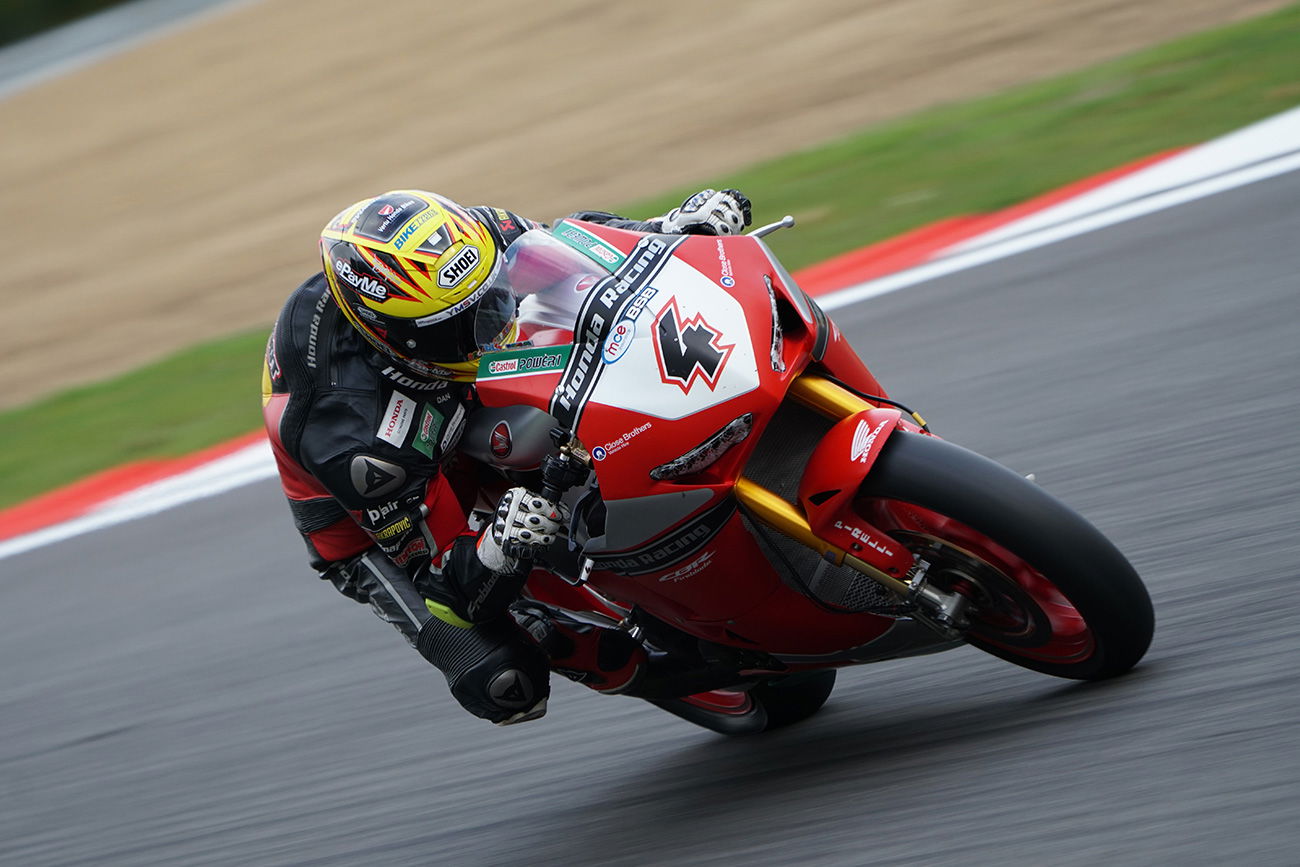
Being a GM lens the build quality is excellent and despite its focal length it weighs in at only 1395 g (49.21 oz.) and measures 205 mm (8.07 in.) in length. This makes it a very good option for travelling with and I did just that when I took this lens to Borneo for a couple of weeks (my Borneo adventure).

The lens is weather sealed against dust and moisture and I had no issues with condensation even in Borneo which was extremely hot and humid.

Sharpness across the frame is excellent and DxOMark rate this as the sharpest lens in the 100-400mm focal range.
The lens is compatible with both the Sony FE 1.4x and 2.0x teleconverters, helping to extend its reach up to 560mm with the 1.4x and up to 800mm with the 2x.

The autofocus is fast, accurate and virtually silent and the lens also features optical image stabilization built-in with 2 panning modes.
On the lens body you’ll find both a focus and zoom ring, there’s also a zoom smoothness adjuster that provides mechanical control of zoom ring torque. Unfortunately there is no zoom lock switch and this lens can creep when pointing towards the ground.
You will also find an array of switches on the side of the lens which include: AF/MF switch, AF distance limiter to reduce focus searching to 3 meters and greater, OSS (Optical Steady Shot) on and off switch which also overrides the build in IBIS of your camera if present, and the panning mode switch.
This really is the best 100-400mm zoom lens available for Sony E-mount today. An alternative would be the Sigma 100-400 but the autofocus speed and tracking stickiness lags behind by quite some distance.
Key Specs
| Model Name: | SEL100400GM |
| Format: | 35 mm full frame |
| Focal Length (mm): | 100-400 mm |
| Angle of View (35 mm): | 24°-6°10′ |
| Maximum Aperture: | F4.5-5.6 |
| Minimum Aperture: | F32-40 |
| Lens Groups / Elements: | 16-22 |
| Aperture Blades: | 9 circular |
| Minimum Focusing Distance: | 3.22 ft / 0.98 m |
| Maximum Magnification Ratio: | 0.35x |
| Lens Image Stabilization: | Yes (2 modes) |
| Filter Diameter: | 77 mm |
| Teleconverter Support: | Yes: 1.4x / 2x |
| Diameter: | 3-3/4″ / 93.9 mm |
| Length: | 8-1/8″ / 205 mm |
| Weight: | 49.21 oz. / 1395 g (without tripod mount) |
Pros
- Very sharp from 100mm to 400mm
- Fast and silent autofocus
- Well controlled vignetting and chromatic aberration
- Pleasing bokeh
- Well balanced
- Dust and moisture resistance
- Zoom ring tension adjustment
- Flare resistance
Cons
- Focus ring is too loose
- Expensive
What’s in the Box
- Hood (model): ALC-SH151
- Lens front cap: ALC-F77S
- Lens rear cap: ALC-R1EM
- Case
- Tripod mount
Review
If you’d like to learn more about the Sony FE F4.5-5.6 100-400mm G Master lens then you’ll find my complete review here. This review from Jay is also worth a watch.
15. Tamron 28-300mm F/4-7.1 Di III VC VXD

The Tamron 28-300mm F/4-7.1 Di III VC VXD is a super versatile and lightweight zoom lens that would make a great travel companion for your A7C R.
This lens covers a very broad focal length range from 28mm wide-angle to 300mm telephoto with superior imaging performance. It achieves a zoom ratio of 10.7x with a length of just 5” (126mm) and weighs only 21.5 oz. (610g).
The lens features 20 elements in 13 groups, including one XLD extra-low dispersion and one LD low dispersion element. It uses Tamron’s BBAR-G2 (Broad-Band Anti-Reflection Generation 2) coatings to help minimize ghosting and flare.
It makes use of Tamron’s “VXD” voice-coil linear motor and VC (Vibration Compensation) stabilization system to help you achieve pin sharp shots at 300mm and under low light conditions.
There’s a 9 blade circular diaphragm that delivers beautifully smooth bokeh and the minimum focusing distance is just 0.19m (7.5″) at the wide end and 0.99m (39″) at the tele end.
Like many of Tamron’s lenses you’ll find the popular 67mm filter thread size on this lens.
For greater protection when shooting outdoors, leak-resistant seals throughout the lens barrel help protect your equipment. Also, the Connector Port is the water-proofed USB Type-C variety.
Key Specs
| Model Name: | A074 |
| Format: | 35 mm full frame |
| Focal Length (mm): | 28-300 mm |
| Angle of View (35 mm): | 75° 23′-8° 15′ |
| Maximum Aperture: | F4-7.1 |
| Minimum Aperture: | F22-40 |
| Lens Groups / Elements: | 13-20 |
| Aperture Blades: | 9 circular |
| Minimum Focusing Distance: | 0.19m (7.5″) (Wide) / 0.99m (39″) (Tele) |
| Maximum Magnification Ratio: | 1:2.8 (Wide) / 1:3.8 (Tele) |
| Lens Image Stabilization: | Yes |
| Filter Diameter: | 67 mm |
| Teleconverter Support: | No |
| Diameter: | 3 ” / 77 mm |
| Length: | 5″ / 126 mm |
| Weight: | 21.5 oz. / 610 g |
Pros
- Huge focal range
- Well built and weather sealed
- Fast and accurate autofocus
- Well controlled distortion, vignette and chromatic aberrations
- Reasonably sharp throughout zoom range
- Good flare resistance
- Good value
Cons
- Stabilization is not the most effective
- Aperture range is very slow
- Corner sharpness at the wider 18mm end is poor
- Bokeh is not always the smoothest
What’s in the Box
- Tamron 28-300mm f/4-7.1 Di III VC VXD Lens (Sony E)
- Front Lens Cap
- Rear Lens Cap
- Lens Hood
Review
If you’d like to learn more about the Tamron 28-300mm F/4-7.1 Di III VC VXD lens then this review from Dustin Abbott is the one to watch.
Sony E-mount Teleconverters
Sony currently offers two teleconverters for their E-mount lenses, a 1.4x and a 2x. However, these are only supported with the following E-mount lenses:
- Sony FE 70-200mm F2.8 GM OSS
- Sony FE 70-200mm F2.8 GM OSS II
- Sony FE 70-200mm F4 G Macro OSS II
- Sony FE 100-400mm F4.5-5.6 GM OSS
- Sony FE 200-600mm F5.6-6.3 G OSS
- Sony FE 400mm F2.8 GM OSS
- Sony FE 600mm F4 GM OSS
Sony 1.4x Teleconverter Lens (SEL14TC)
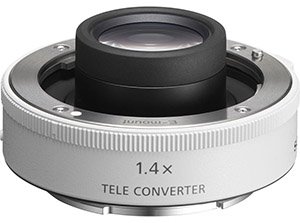
Sony 2x Teleconverter Lens (SEL20TC)

Which Is the Best Travel Lens?
A good travel lens will strike a balance between image quality, weight, features and price. You’ll want a lens that will help you to capture the best possible images at the locations you are travelling to.
If you only want to take one lens then you’ll definitely want to go with a zoom lens that will cover a wide focal area.

Weighing in at only 17.3 oz. / 488 g the Sony FE 20-70mm F4 G zoom lens is a great choice for the A7C R’s compact body.
With a very useful focal length of 20-70mm and a maximum aperture of F4, this lens is a great choice for travel, landscape and urban photography.
Which Is the Best Portrait Lens?
A good portrait lens has a wide maximum aperture and a focal length between 70–135 mm. These characteristics allow you to blur the background, keep the focus on your subject, and capture beautiful images.

The Sony FE 85mm F1.4 GM Mark II lens features a fast maximum aperture of f/1.4 in a compact, lightweight, and weather-sealed body. If you want the best possible portrait lens for your A7C R, then this is the one to go for.
Which is the Best Wide-Angle / Landscape Lens?
The Sony FE 16-35mm f/2.8 GM II is one of the best choices to pair with the A7C R for landscape photography providing you have the budget for it.

A more budget friendly option would be the Tamron 17-28mm F2.8 Di III RXD lens which offers unbelievable image quality for its price.
Which is the Best Wildlife Lens?
A good wildlife lens will be both sharp and fast to focus allowing you to track your subjects with ease and also still crop in if necessary without sacrificing image quality.

The Sony FE F4.5-5.6 100-400mm G Master lens is an excellent choice to pair with the A7C R for wildlife photography.
It weighs in at only 1395 g (49.21 oz.) and measures 205 mm (8.07 in.) in length.
This makes the lens a great option for travelling with and I did just that when I took this lens to shoot wildlife in Borneo for a couple of weeks (my Borneo adventure).
Additional Lens Guides
Camera & Lens Deals
The following links should filter all of the Sony camera, lens and accessory deals currently running at Amazon and B&H Photo in the USA.
Sony A7C R Guides & Resources
Sony A7C R Lens FAQs
The Sony A7C R is compatible with full-frame and APS-C Sony E-mount lenses. Third-parties such as Sigma and Tamron also produce compatible E-mount lenses.
Yes. The Sony A7C R features a 35mm full-frame image sensor.
Sony E-mount. Both APS-C lenses and full-frame E-mount lenses can be used.
Although the Sony A7C R has a 35mm full-frame sensor you can still use APS-C lenses in Super35 mode if you wish. This will however introduce a 1.5x crop.
Canon EF lenses can be used but only with an EF to E-mount lens adapter such as the one from Metabones or Sigma’s MC-11 adapter.
You can either purchase the Sony A7C R as body-only or you can purchase it with a lens bundle, these vary from seller to seller.
Sony A7C / A7CII / A7CR Forum & Facebook Group
If you are looking for further help and advice on the A7C or would simply like to share your photos and videos, then please head over to our friendly full-frame Forum. If you prefer Facebook then I also run the Sony A7C + A7CII + A7CR Shooters Group.

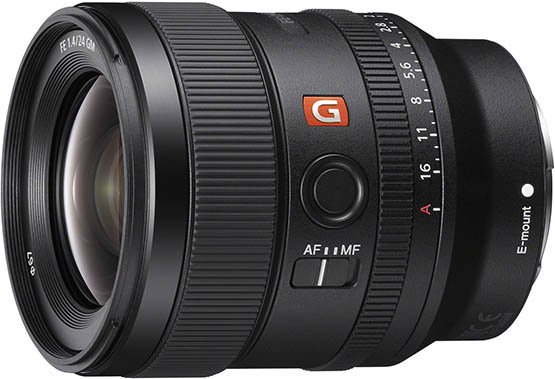
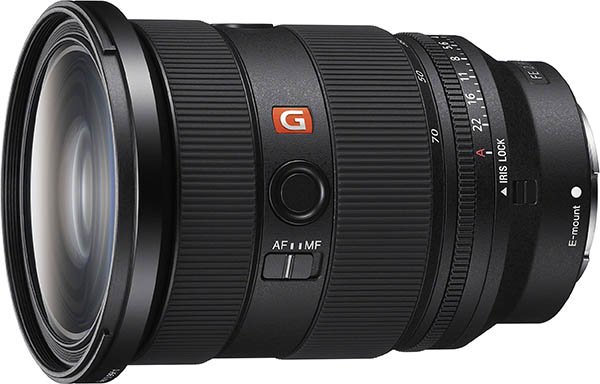
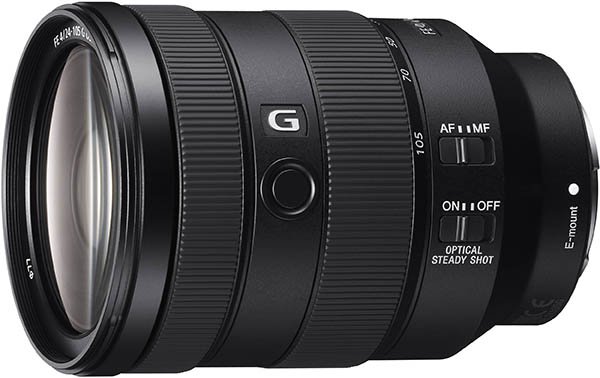



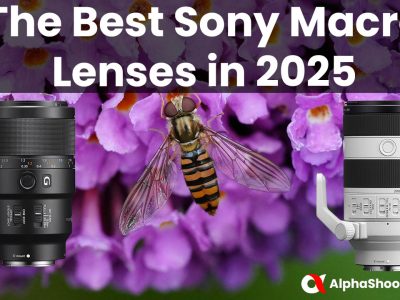
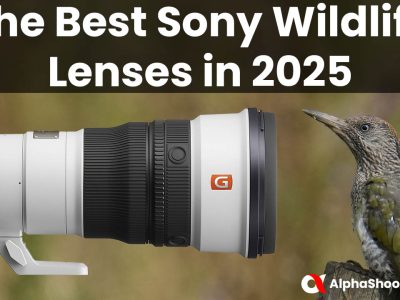

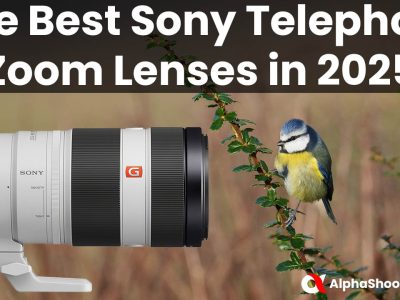
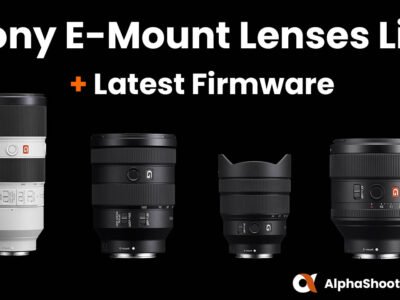

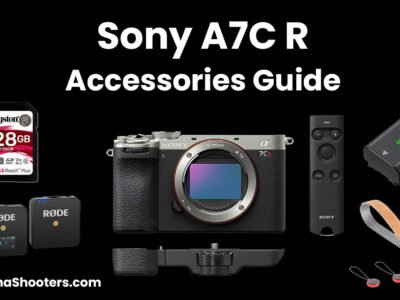
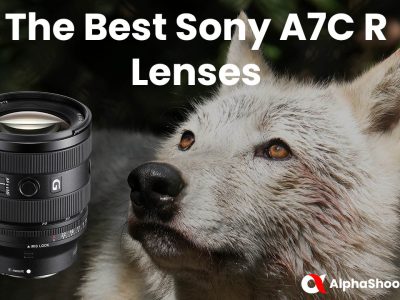
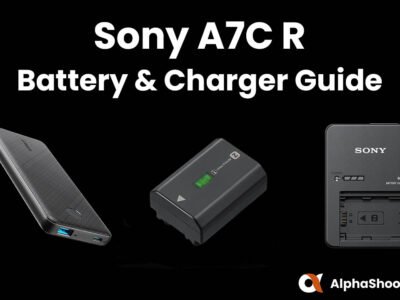



Leave a Reply